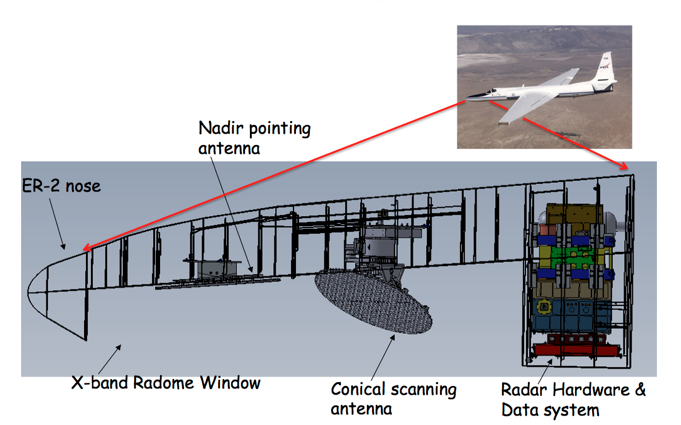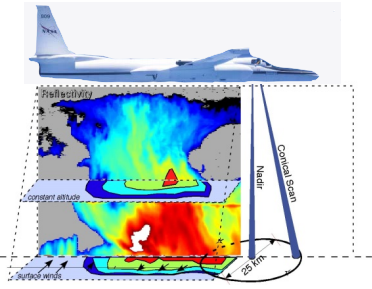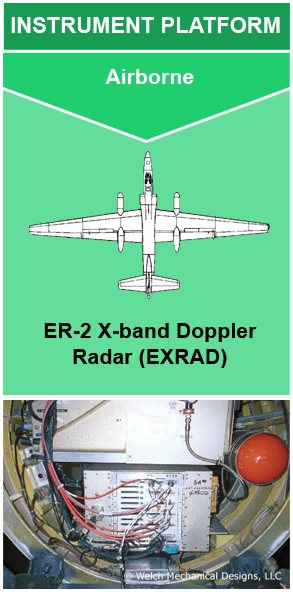Instrument: ER-2 X-band Doppler Radar (EXRAD)
The ER-2 X-band Doppler Radar (EXRAD) is a dual-beam, 9.6 GHz X-band Doppler radar used for airborne weather observations. It is designed to operate at high altitudes, onboard the NASA ER-2 research aircraft (ER-2). EXRAD operates using two offset-feed parabolic antennas including a fixed nadir-pointing antenna and a scanning antenna that can scan conically or cross-track (Figure 1). EXRAD was originally built to operate onboard Global Hawk, however, it was reassigned to operate primarily onboard the ER-2 to replace the aircraft’s aging ER-2 Doppler Radar (EDOP). EXRAD and EDOP are very similar instruments and therefore have comparable measurement capabilities. The main difference is the conical/cross-track scanning antenna that is included with EXRAD compared to the fixed forward-pointing antenna with EDOP.


Measures the backscatter of precipitation particles in the atmosphere to determine the radar reflectivity, Doppler velocity, and linear depolarization ratio. Reveals the 3-dimensional structure of precipitation and air motions below the aircraft. Provides information on the phase, orientation, size, and other characteristics of precipitation particles.

| RANGE RESOLUTION | PEAK POWER | SWATH WIDTH | PULSE REPETITION FREQUENCY (PRF) | FREQUENCY | TILT ANGLE | SENSITIVITY |
|---|---|---|---|---|---|---|
| 37.5 - 300 meters | 9.0 kW |
Scanning mode: 28 km (~19 km current) at 20 km altitude
Nadir: N/A
|
5000/4000 Hz |
Scanning mode: 9.596 GHz
Nadir: 9.624 GHz
|
Scanning mode: 35° (25° current)
Nadir: N/A
|
Scanning mode: -10 dBZ
Nadir: -15 dBZ
at 10 km range
|
| DATASET NAME | GUIDE | SOFTWARE |
|---|---|---|
| GPM Ground Validation X-band Radar (EXRAD) IPHEx |
|
None |
| TCSP ER-2 Doppler Radar (EDOP) |
|
IDL Software Package |
| CAMEX-4 ER-2 Doppler Radar |
|
Py-ART |
| CAMEX-3 ER-2 Doppler Radar (EDOP) |
|
None |









